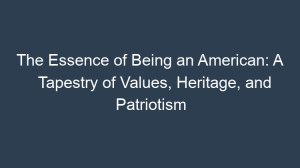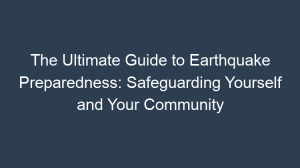We’ve all been there: you’re stumped by a problem, a question, or a puzzle, and you just can’t seem to find the answer. You rack your brain, you search the internet, you ask your friends and family, but nothing seems to work. The answer just eludes you.
But what if there was a way to find the answer to any question, no matter how difficult? What if there was a secret formula or a magic trick that could unlock the secrets of the universe? Well, there’s no such thing as a magic bullet, but there are some strategies you can use to improve your chances of finding the answer to any question.
First, try to define the question as clearly as possible. What exactly are you trying to find out? Once you know what you’re looking for, you can start to narrow down your search. Next, gather as much information as you can about the topic. This could include reading books and articles, talking to experts, or conducting your own research.
1. The Power of Perspective:
Shifting Your Viewpoint:
Sometimes, the answer to a question can be hidden in plain sight, but we’re too close to the problem to see it. Try stepping back and looking at the situation from a different angle. Consider alternative explanations or possibilities that you might not have thought of before.
Seek Outside Opinions:
Don’t be afraid to ask for help from others. Bouncing ideas off someone else can provide fresh perspectives and insights that you might not have considered on your own. Sometimes, an outsider’s viewpoint can uncover hidden connections or solutions.
Embrace Curiosity:
Cultivate a curious mindset and be open to exploring new ideas and concepts. The more you learn and experience, the broader your understanding becomes, increasing the likelihood of finding answers to complex questions.
2. The Importance of Persistence:
Don’t Give Up:
Finding the answer to a challenging question often requires persistence and dedication. Don’t get discouraged if you don’t find the answer immediately. Keep digging, exploring different avenues, and trying new approaches. Remember, perseverance often leads to breakthroughs.
Revisit and Reframe:
If you’re stuck, try revisiting the question from a different angle or reframing it in a new way. Sometimes, a slight shift in perspective can lead to fresh insights and potential solutions.
Embrace Failure:
Don’t be afraid to fail. Failure is a natural part of the learning process. Each unsuccessful attempt brings you closer to the right answer by eliminating incorrect paths. Embrace failure as an opportunity to learn and grow.
3. The Art of Critical Thinking:
Analyze Assumptions:
Question your assumptions and biases. Are you overlooking certain aspects of the problem? Are you making generalizations that might not be accurate? Critically examine your assumptions to ensure you’re approaching the question with an open mind.
Break Down the Problem:
Break down complex questions into smaller, more manageable parts. This can make the problem seem less daunting and easier to tackle. Focus on solving each part one step at a time until you reach the final answer.
Evaluate Evidence:
Gather evidence and data relevant to the question. Evaluate the evidence critically, considering its validity, reliability, and relevance. This will help you form a well-informed conclusion.
4. The Role of Creativity:
Think Outside the Box:
Don’t be afraid to think outside the box and explore unconventional approaches. Sometimes, the answer to a question lies beyond the boundaries of traditional thinking. Be open to creative ideas and solutions.
Use Analogies and Metaphors:
Draw analogies or use metaphors to understand complex concepts or problems. This can help you see the situation from a different perspective and potentially uncover new insights.
Embrace Playfulness:
Playfulness and experimentation can lead to innovative solutions. Try different approaches, experiment with ideas, and see what happens. Sometimes, the most unexpected paths lead to the most profound answers.
5. The Value of Collaboration:
Seek Diverse Perspectives:
Collaborate with others who have different backgrounds, expertise, and perspectives. This can bring a wealth of knowledge and insights to the table, increasing the likelihood of finding a comprehensive answer.
Share Ideas and Feedback:
Share your ideas and findings with others and be open to their feedback. Constructive criticism can help you refine your approach and identify areas for improvement.
Foster Open Communication:
Create an environment where open communication and idea-sharing are encouraged. This can foster a collaborative atmosphere where diverse perspectives are valued and respected.
6. The Power of Patience:
Allow Time for Incubation:
Sometimes, the answer to a question doesn’t come immediately. Allow time for your subconscious mind to work on the problem. Take breaks, engage in other activities, and let your thoughts wander. Sometimes, the answer will come to you unexpectedly.
Embrace Uncertainty:
Accept that not all questions have immediate or easy answers. Sometimes, the journey to finding the answer is as important as the answer itself. Embrace uncertainty and be open to the possibility that the answer may not be what you expected.
Find Joy in the Process:
The quest for answers can be a rewarding and enriching experience. Find joy in the process of exploration and learning, even if you don’t find the answer right away. The journey itself can teach you valuable lessons and broaden your understanding of the world.
7. The Importance of Research:
Conduct Thorough Research:
Gather information from various sources, including books, articles, online resources, and experts in the field. The more information you have, the better equipped you’ll be to analyze the problem and find a solution.
Evaluate Sources Critically:
Not all sources are created equal. Evaluate the credibility and reliability of your sources before using them to inform your answer. Consider the author’s expertise, the publication’s reputation, and the currency of the information.
Synthesize Information:
Once you’ve gathered information from various sources, synthesize it to form a comprehensive understanding of the topic. Look for patterns, connections, and discrepancies. This will help you identify key insights and potential solutions.
FAQ:
1. How can I improve my ability to find answers to questions?
Practice critical thinking skills, be persistent, and embrace creativity. Seek diverse perspectives, collaborate with others, and conduct thorough research.
2. What should I do when I’m stuck on a question?
Try shifting your perspective, seeking outside opinions, and embracing curiosity. Revisit and reframe the question, and don’t be afraid to embrace failure as part of the learning process.
3. How can I overcome my assumptions and biases when seeking answers?
Critically examine your assumptions and question your biases. Break down complex questions into smaller parts, and evaluate evidence carefully.
4. What role does creativity play in finding answers?
Creativity can help you think outside the box and explore unconventional approaches. Use analogies and metaphors, and embrace playfulness and experimentation.
5. How can collaboration help me find answers?
Seek diverse perspectives, share ideas and feedback, and foster open communication. Collaboration can bring a wealth of knowledge and insights to the table, increasing the likelihood of finding a comprehensive answer.
Conclusion:
Finding the answer to any question is a journey of exploration, learning, and perseverance. By embracing curiosity, persistence, and creativity, we can unlock the secrets of the universe and gain a deeper understanding of the world around us. The quest for answers is a lifelong pursuit, and it is in the asking of questions that we truly discover the beauty and wonder of existence.







